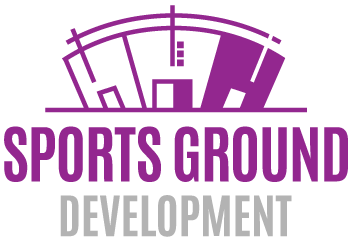Accessibility is a crucial aspect of any sports ground. As centres of activity and community, these venues ought to be welcoming and accessible to everyone, regardless of any physical or sensory disabilities they may have.
Often, these facilities may inadvertently exclude those with disabilities due to inadequate infrastructure, posing challenges to these individuals and dampening their sports experience.
Recognising these challenges is not just a matter of fulfilling our ethical responsibilities.
Sports grounds are public spaces, and as such, they should embody the principles of inclusivity and equal opportunity. Inclusive design is about creating spaces that can be experienced and enjoyed by all, not just a select few.
At Sports Ground Development, we are experts when it comes to disability access and just easier access for sports venues in general.
Understanding Accessibility
To ensure accessibility, one must first understand what it entails. In the context of sports grounds, accessibility refers to the design of products, devices, services, or environments to make them usable by people with disabilities. These disabilities can take many forms, including physical, visual, auditory, cognitive, or a combination thereof.
When we talk about ‘universal design principles’, we refer to the guidelines that ensure that facilities can be accessed, understood and used to the greatest extent possible by all people regardless of their age, size, ability or disability. Sports grounds, being public spaces, should aspire to fulfil these principles and ensure that they are accessible to everyone.
Benefits of Ensuring Accessibility
The social benefits of ensuring accessibility on sports grounds are profound.
For starters, an inclusive environment fosters a sense of community and equality. Sports events become shared experiences that transcend individual differences, thereby promoting social cohesion and mutual respect.
Beyond the social benefits, there are significant economic benefits to ensuring accessibility. Inclusive sports grounds attract a wider audience, which can translate into increased revenue from ticket sales, merchandise, and other related services.
Further, in an age where corporate social responsibility is a key focus, having an accessible facility can enhance an organisation’s reputation and standing in the community.
Challenges in Ensuring Accessibility
Despite the clear benefits, there can be significant challenges in implementing accessibility measures on sports grounds. For many older facilities, retrofitting to make them accessible may entail substantial costs and require a complex redesign.
It is often more than simply installing ramps or wider doorways; instead, it might mean overhauling existing infrastructures to meet accessibility standards.
In addition to the structural changes, there are also administrative and attitudinal barriers to overcome. It can be difficult to change long-held practices and attitudes about accessibility. However, it’s important to view these challenges as opportunities to educate and advocate for change rather than insurmountable obstacles.
Practical Steps Towards Accessibility in Sports Grounds
Achieving accessibility in sports grounds is not a one-time task, but a process. It begins with a thorough evaluation of the current state of the sports ground. This assessment should cover all areas and aspects, considering the different types of disabilities that individuals may have.
The next step involves crafting a detailed plan to enhance accessibility.
The plan should be comprehensive, addressing all identified shortcomings and charting out clear steps to rectify them. This could include improvements to physical infrastructure, changes to administrative practices, or even measures to raise awareness about the importance of accessibility.
The execution of this plan is perhaps the most critical stage. It demands meticulous project management to ensure the proposed changes are implemented effectively and efficiently. Once the changes are in place, it’s crucial to review their effectiveness and make necessary adjustments, ensuring ongoing improvements to accessibility.
The Future of Accessibility in Sports Grounds
Innovative trends and technologies promise to revolutionise accessibility in sports grounds. From state-of-the-art wheelchair designs that provide better mobility to advanced audio systems for the hearing impaired, technology is enabling unprecedented access and engagement with sports events.
Stakeholders have a crucial role to play in this. From government bodies issuing guidelines and standards to sports organisations advocating for accessibility, and individuals lobbying for change, every contribution matters. A future where sports grounds are fully accessible is not just a distant dream, but an achievable reality if we all play our part.
Conclusion
In conclusion, accessibility to sports grounds is a matter of urgency. It involves understanding the multifaceted nature of disabilities and the diverse needs of individuals.
Although implementing accessibility measures can pose challenges, the benefits – social, economic, and community-based – are immense and undeniable.
As we look towards the future, let’s strive to ensure that our sports grounds are truly for all. We each have a role to play in making sports more inclusive and accessible. Let’s begin today.

